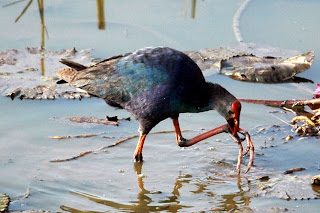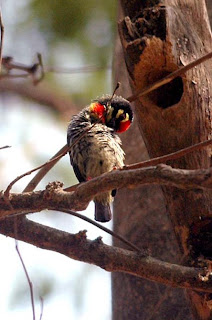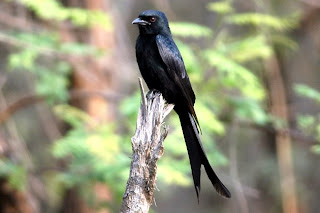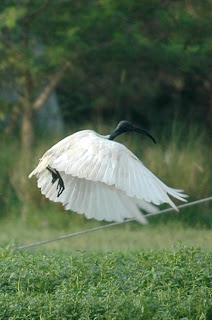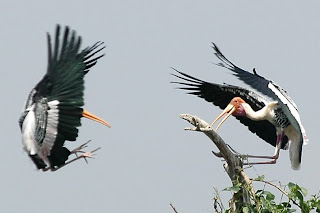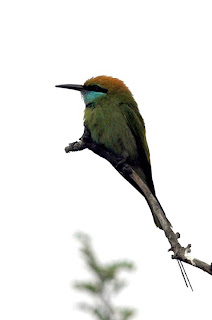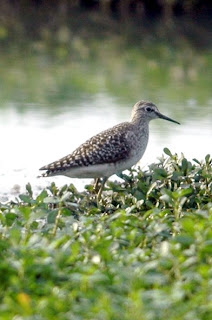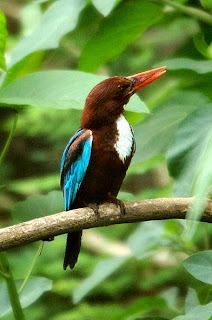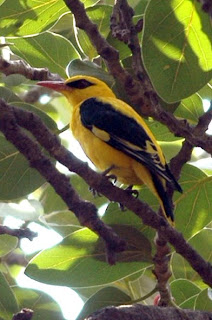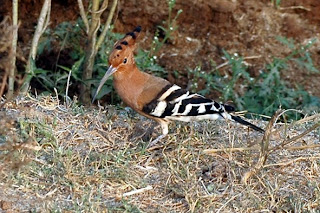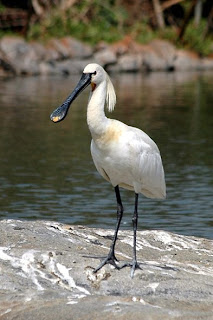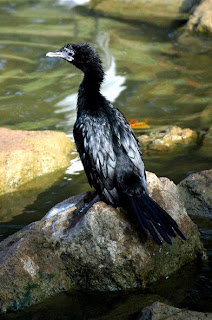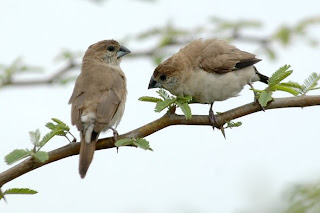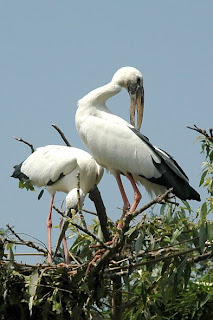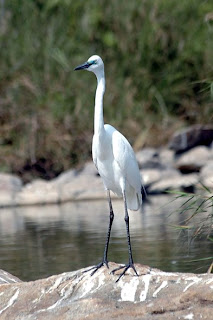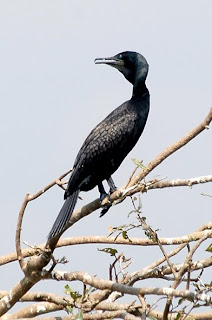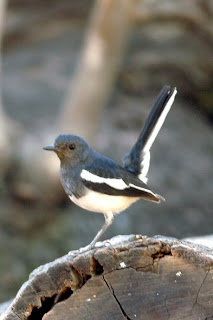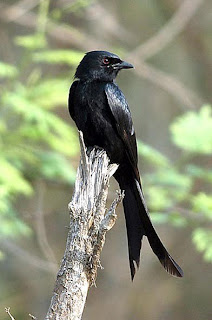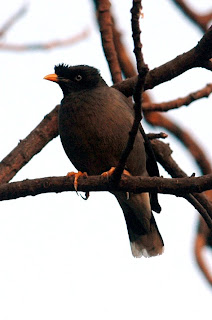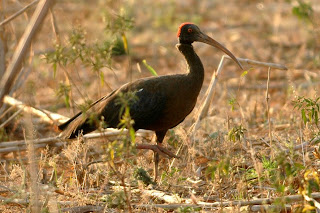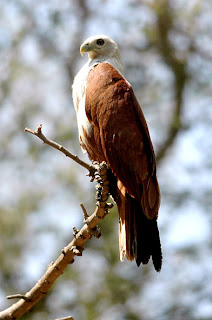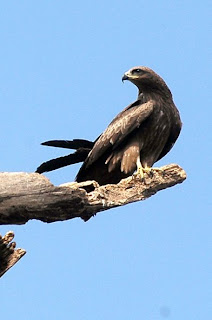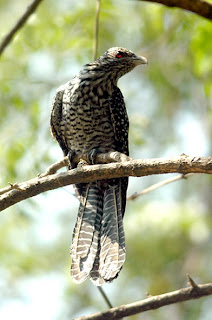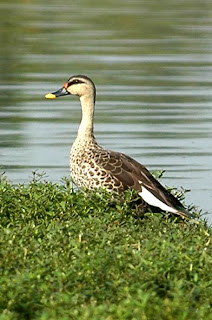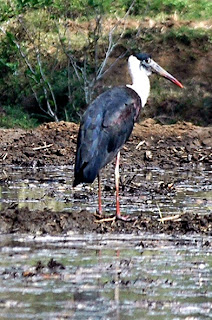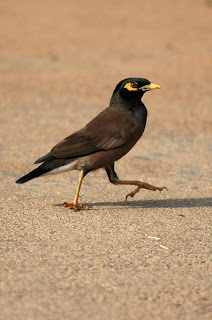 Common Moorhen
Common Moorhen (Gallinula chloropus) is a
bird in the
rail family with an almost worldwide distribution outside
Australasia as well as
deserts, many
tropical rainforests, and the
polar regions. In
North America it used to be called the Common Gallinule, and in
Europe it is generally referred to as the Moorhen.
This is a common breeding bird in marsh environments and well-vegetated lakes. It is often secretive, but can become tame in some areas. Populations in areas where the waters freeze, such as southern
Canada, the northern
USA and eastern Europe, will
migrate to more temperate climes.
It is a distinctive species, with dark plumage apart from the white undertail, yellow legs and a red facial shield. The young are browner and lack the red shield. It has a wide range of gargling calls and will emit loud hisses when threatened.
This species will consume a wide variety of vegetable material and small aquatic creatures. They forage while swimming, sometimes upending to feed, or walking through the marsh.
The nest is a roofed basket built on the ground in dense vegetation. Laying starts in spring, between mid-March and mid-May in N hemisphere temperate regions. 8-12 eggs are usually laid per female early in the season; a second brood in summer usually has only 5-8 or even less eggs; nests may be shared by females. Incubation lasts about three weeks. Both parents
incubate and feed the young. These fledge after 40-50 days, become independent usually a few weeks thereafter, and may raise their first brood the next spring.(Snow et al. 1998). Despite loss of habitat in parts of its range, the Common Moorhen remains plentiful and wides
About one dozen
subspecies are today considered valid; several more have been described which are now considered
junior synonyms. Most are not very readily recognizable as differences are rather subtle and often
clinal. Usually, the location of a sighting is the most reliable indication as to subspecies identification, but the migratory tendencies of this species make identifications based on location not completely reliable.
Old World birds have a frontal shield with rounded top and fairly parallel sides; the tailward margin of the red unfeathered area is a smooth waving line.
American birds have a frontal shield that has a fairly straight top and is less wide towards the bill, giving a marked indentation to the back margin of the red area.
Despite being a bountiful species, small populations are of course more prone to
extinction. The Mariana Common Moorhen or pulattat (G. c. guami) is very rare nowadays due to destruction of
habitat. Only some 300 adult birds remained in 2001, and it is listed as Endangered both
federally (since 1984) and locally (Takano & Haig 2004).
In addition to the extant subspecies listed below, there are two
Pleistocene paleosubspecies known from
fossils. These were distinct (generally larger) forms and probably the direct ancestors of some of today's Common Moorhens: Gallinula chloropus brodkorbi from the
Ichetucknee River, Florida, and an undescribed
Early Pleistocene form from
Dursunlu,
Turkey (Louchart et al. 1998).
